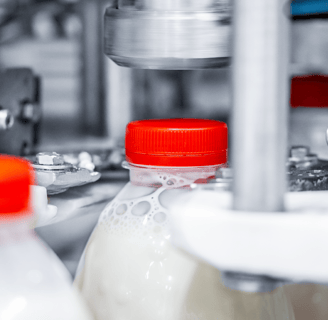A2 Milk Gut Health Insights + Norway's Northern Lights
November Wellness Insights | Gut Health, Norway’s Spas, and Fitness Trends.
NORWAYFOOD MEDICINE
10/25/2024
BREAKING NEWS & TRENDS 📰
Strong Pilates, an Australian favorite, is making a big splash in the U.S. with over 100 confirmed studios, including 77 signed franchise agreements across major cities like Dallas, Austin, Los Angeles County, and New Jersey. What makes it unique? The blend of Rowformers and Bikeformers that combine traditional Pilates with cardio, keeping workouts dynamic and heart rates up!
📖 Fitness Insight | Expect a stronger core and a healthier heart, thanks to this innovative blend of Pilates and cardio. 🔗 Read more about Strong Pilates
🏋️♀️ Strong Pilates | Coming to 100+ US Locations!
🥛 A2 Milk | Yes, that is 6% creamy milk. A Solution for Milk Sensitivities?
With the global A2 milk market set to grow from $2.63 billion in 2023 to $13.18 billion by 2034, A2 milk is quickly becoming a popular choice for health-conscious consumers. Unlike traditional milk that contains both A1 and A2 proteins, A2 milk only contains A2 beta-casein, making it easier to digest. Studies even suggest that some people with lactose intolerance experience fewer symptoms with A2 milk.
📖 Health Tip | If you’re sensitive to regular milk, try A2 for a gentler option. Our personal favorite brand is Alexandre Family Farms [Not an ad] 🔗 Learn more about the A2 milk market


LONGEVITY & GROWTH 👩🏼⚕️
🩺 Gut Health & Lactose Intolerance | Understanding Lactose Intolerance Beyond the Basics 🥛
Lactose intolerance is not simply about having trouble digesting milk—it’s a complex condition affecting 68% of the global population. When the body lacks lactase (the enzyme needed to break down lactose), consuming milk products can lead to symptoms like bloating, gas, and abdominal pain. Unlike a true milk allergy, lactose intolerance varies in intensity based on genetics, diet, and gut health.
Interestingly, research suggests that many individuals with lactose intolerance can tolerate up to 250 mL of milk (about 12 grams of lactose) when consumed with other foods. This tolerance is linked to the adaptability of the gut microbiome, particularly the role of bifidobacteria, which helps break down lactose into simpler sugars without producing gas.
📖 Gut Health Insight | Lactose intolerance is often more prevalent in specific populations, including African Americans, American Indians, Asian Americans, and Hispanics/Latinos. This is due to historical dietary patterns, making lactase persistence less common in these groups.
🍽️ How Diet and Gut Microbiome Interact Emerging research emphasizes the crucial role of the gut microbiome in managing lactose intolerance. Regular lactose exposure can increase bifidobacteria populations, leading to better digestion and fewer symptoms over time. The presence of bifidobacteria not only supports lactose digestion but also produces short-chain fatty acids (SCFAs), which offer additional health benefits like improved colon health and immune function. In a study involving 959 participants with lactose intolerance, those with higher bifidobacteria levels experienced fewer symptoms, despite continued dairy intake. This suggests that gut adaptation—not just the absence of lactose—can significantly reduce discomfort.
📖 Gut Health Tip | Introducing small amounts of lactose over time, along with a diet rich in prebiotics (like garlic, onions, and bananas), can enhance the growth of beneficial bacteria, helping ease lactose intolerance symptoms.
💊 Probiotics, Prebiotics, and Microbiome Balance
While probiotics are popular for gut health, they may not permanently colonize the gut. Instead, prebiotics—fibers that feed beneficial bacteria—play a more significant role in sustaining a balanced microbiome. Complex plant-based fibers naturally found in foods can support the growth of native gut microbes that aid in digestion and overall health. Studies also reveal that over-the-counter probiotics do provide temporary relief for digestive issues but may not lead to long-term colonization or microbiome changes. Instead, a diverse diet full of complex carbohydrates, fibers, and fermented foods (like sauerkraut, miso, and kombucha) is more effective in promoting sustained gut health.
📖 Longevity Tip | Focus on whole, fiber-rich foods to maintain a healthy gut microbiome that aids lactose digestion and supports overall health.
📝 U.S. Trends in Gut Health & Lactose Intolerance
A recent Ipsos poll highlighted that half of Americans actively engage in mindful eating or use digestive aids to manage gut health. Among these respondents, 21% have tried a dairy-free diet, with younger adults (aged 18-44) being more likely to adopt such dietary changes. However, a surprising 49% of Americans admit to having unresolved digestive issues, signaling a need for more effective and tailored gut health strategies.
The poll also found that only 47% of Americans understand the role of the gut microbiome in overall health, pointing to a significant gap in awareness. Given the high prevalence of digestive discomfort, increasing public understanding of gut health—particularly the interplay between diet, lactose intolerance, and the microbiome—could lead to better health outcomes. 📊Ipsos Gut Health Poll Results
Sign Up | Share | Advertise | Shop | Be well <3


Thank you for being part of the Clemenshine wellness network.
Clemenshine
Your guide to all things wellness, longevity, health, lifestyle.
Contact
JOIN OUR NETWORK
Advertise go@clemenshine.com
© 2024. All rights reserved.


